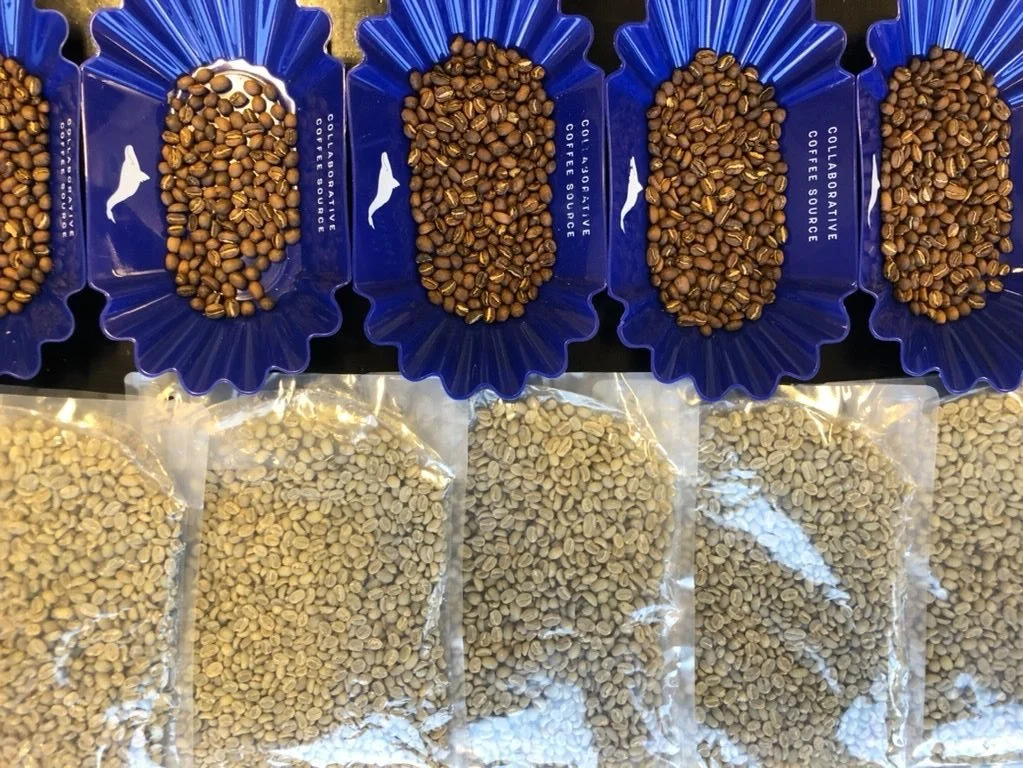This week Matt Hassell, Global Buyer, QC & Sample Management for Collaborative Coffee Source, and former roaster for George Howell Coffee, has been fielding your roast questions. Here’s a question from @jstnkndy:
@collaborativeCS You mentioned Loring in your last post, can you talk about your experience with Loring vs drum roasters? #ccsqanda
— Justin Kennedy (@jstnkndy) December 12, 2017
Matt's response:
As I briefly mentioned in the last post, I have worked on two different machines. The Loring Kestrel S35 and a 1950’s Probat UG-22. Looking back, it was kind of cool having the chance to learn to roast on two vastly different roasters. There is a difference between a person who is a “Coffee Roaster” in every sense of the title, and someone who just operates a coffee roasting machine. I attribute learning to use a second machine as a defining moment when I considered myself a Coffee Roaster. It forced me to understand why things were happening rather than just knowing how to follow a roast profile.
I first learned to roast on the Loring. Not only a Loring, one of the first ones ever made. It was difficult to find much help to improve my understanding because every resource seemed to be about drum roasters, and there are a few major differences with a Loring.
The Loring basically works like this: heat is pulled off the burner through a cyclone by a fan, then forced into the inlet of the drum. That heat is then forced through the bed of beans, and pulled out by a return fan (that returns the air back into the burner chamber) and the process repeats. Only, the drum is stationary, and the beans are churned by spinning paddles. So, there is no conductive heat, only convective.
Heat transfer rates differ drastically between the two methods. This ended up being the biggest difference between the two. The Loring requires a higher relative burner application to achieve similar levels of development. It took me a long time to figure out what the limits were. My better understanding of them, coupled with Loring’s recent upgrades, has given me a new appreciation for the roaster. I prefer the Loring over drum roasters for espresso roasts, and filter roasts for origins that are your ‘bigger body’ or ‘chocolate, caramel based sweetness’ coffees.
There is a lot of information available in print, both physical and digital, that details how a drum roaster works. They are by far the more commonly used roasters, and in my opinion, are much more intuitive. The one I learned on had some minor airflow and burner modifications, but was mostly as originally designed. Despite being twice as old as me, it was a remarkably consistent and produced a very good roast. The drum, being cast iron, stored a lot of heat. I suppose it depends who you ask, but to me, this was a major positive. I liked being able to back off the burner application heavily, and let the momentum of the stored drum heat carry me through some portions of the roast.
The most useful feature of the machine though, was the airflow damper. This damper, located behind the impeller fan (that pulls the air through the drum) could raise or lower the airflow depending on position, thus changing the ratio of convection:conduction. Proper adjustments can really help minimize some of the variables that we face every day in New England (temperature and humidity variance). These two differences, conductive heat and adjustable airflow, really made me feel like I could hit a small sweet-spot on a coffee. It is for this reason that I preferred the Probat over the Loring for brighter fruit, and higher acidity coffees.





